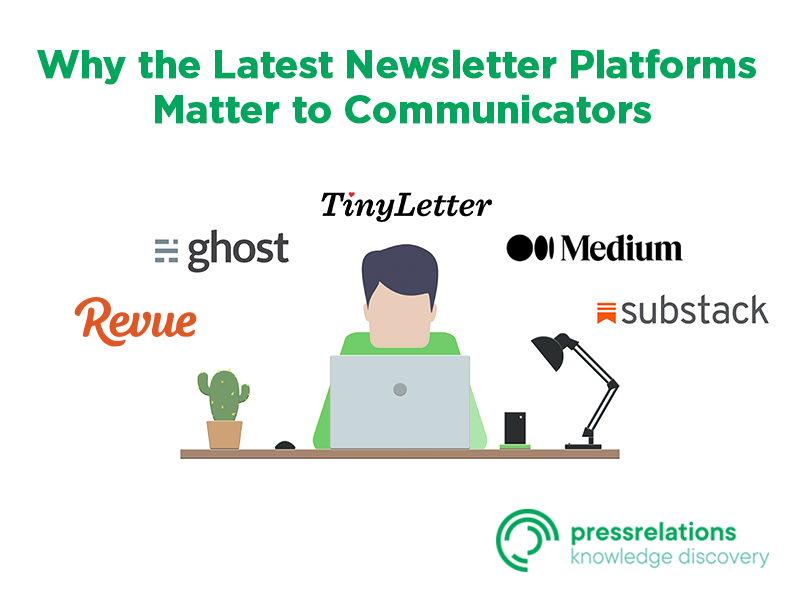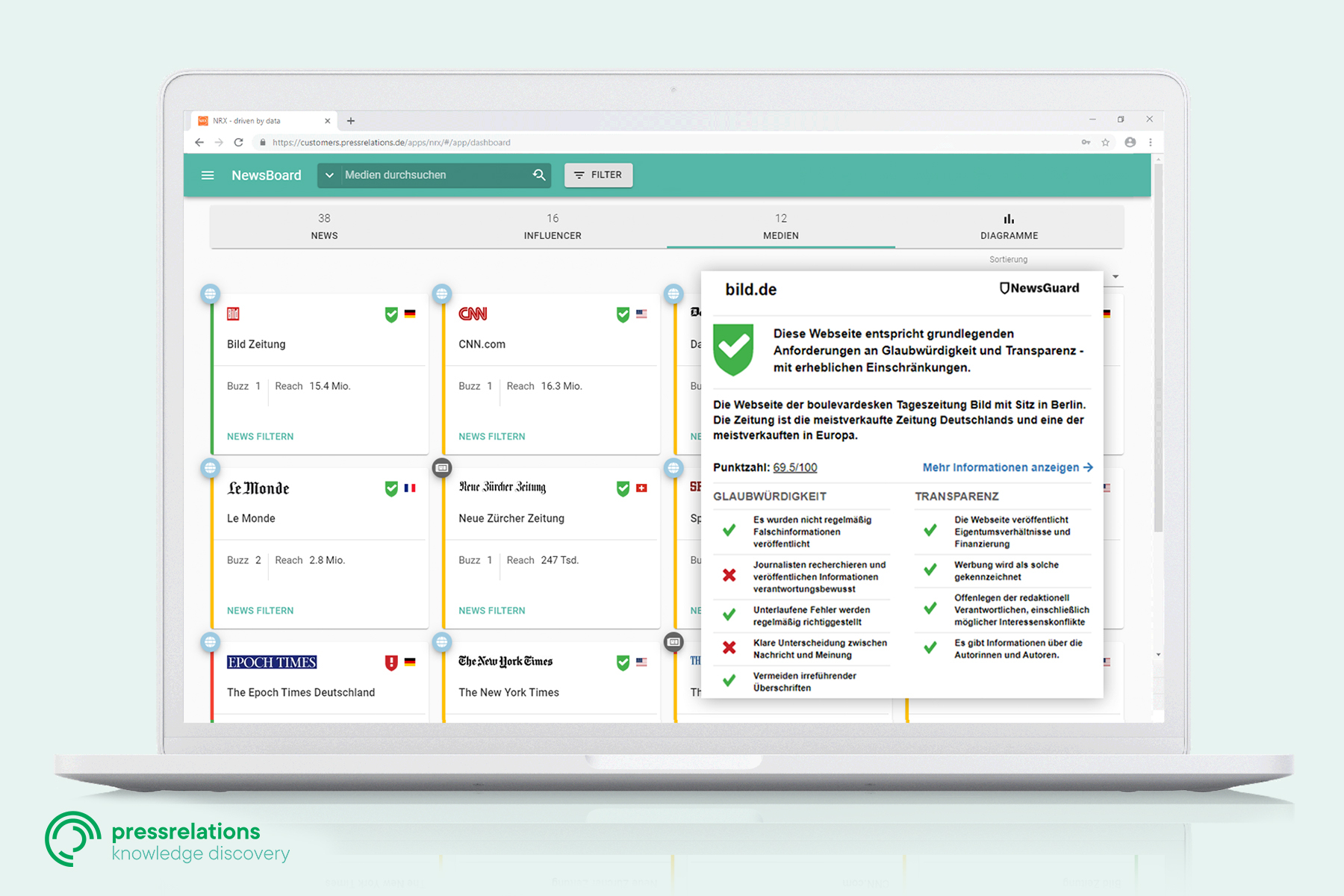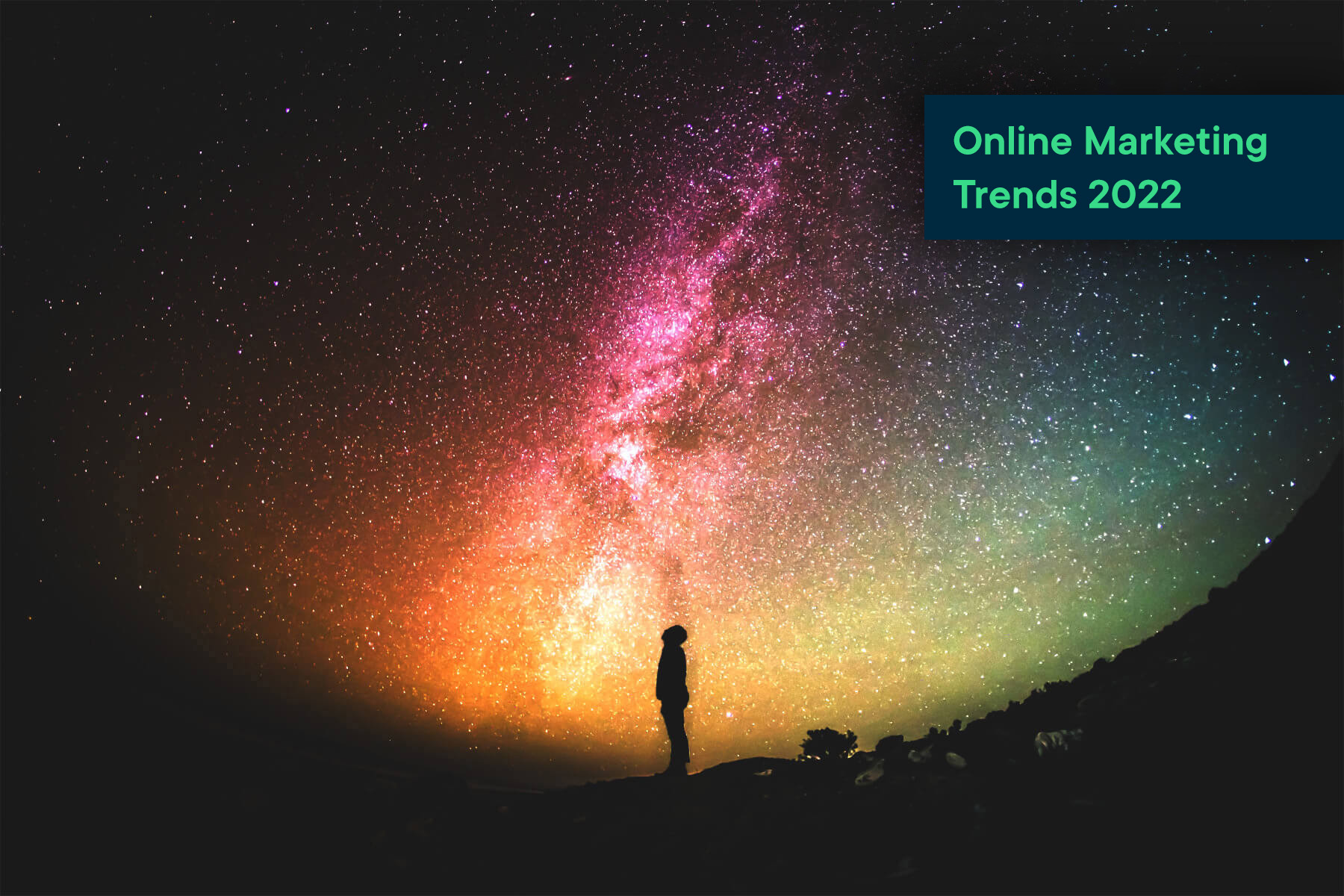The first independent newsletter-based author Hunter Walker got accredited by the White House in June 2021. Joining the White House press corps puts his newsletter ‘The Uprising‘ on par with established journalists and White House correspondents such as Andrew Feinberg (The Independent) or Paula Reid (CBS).
The Uprising is only one example of a wider trend and a broader change within the media ecosystem in the United States and around the globe. Social media, newspapers and blogs are not the only channels for content creators to share output with their audiences. With the recent rise of the new content publication and content distribution platforms, such as Substack, Twitter’s Revue, Ghost, Tinyletter, and others, the media landscape and the way content creators communicate and share their views continues to change irrevocably.
Some leading journalists currently do what, for example, Charlie Warzel already did a while ago: leaving an established media source (in his case the New York Times) to become a full-time substacker with his newsletter ‘Galaxy Brain‘. But functional experts are getting in on the game, too: PR industry veteran Stephen Waddington, for example, launched his weekly PR industry briefings on Substack in mid-2020. For more examples, check out these top newsletters as chosen by newsletter writers themselves.
But why do many top journalist value these emerging newsletter platforms? Part of the answer is that they offer new ways to produce, publish and distribute content. Journalists are also looking to promote their content through interactive content distribution platforms that can engage communities and foster creativity.
And there is more: according to one benchmark study, successful marketers use an average of five platforms when distributing content. That’s just the average, mind you. So any PR person or marketer who’s hoping for stellar engagement on Medium alone will have to keep waiting, because there’s someone out there who’s doing it on nine or ten platforms – simultaneously.
This means that content creators must share their content in multiple ways that give them exposure to key audiences, decision-makers and other stakeholders.
This article will discuss how journalism is evolving with the rise of new media forms, and how PR professionals can leverage these new platforms.
The Rise of Content Distribution Platforms
The rise of the new content platforms provides writers with the opportunity to celebrate and deliver untarnished writing opinions to their readers. Without fixed editorial guidelines and set company policies, these platforms offer writers more flexibility and editorial freedom over their pieces and in monetizing their writings.
Also, unlike social media, Substack, Medium, and Ghost do not employ algorithms that can limit the visibility of specific posts. In addition, social media stories and posts are available for the wider public to see only if the profile pages are public. At the same time, content creators can have a wide following on their publishing platforms, and anyone can have access to their content.
These platforms help self-published journalists and functional experts stand out from the sea of content that is published online every day. Add to this equation the dwindling attention spans of online readers, and you can see how difficult it can be to differentiate your content from the crowd.
Content creators who fail to leverage these paid content distribution platforms will have to invest a lot of time and effort elsewhere to get noticed and get their content shared.
Effective Strategies for Content Distribution Platforms
For measurable results, first, make sure to select channels and platforms that are frequently visited by your intended audiences and are best suited to their behaviors. Then, continue testing your new distribution options until you find the perfect mix.
Also, factor in the following guidelines for maximum impact:
Create Personalized Content
Content platforms like Substack, Revue, and Ghost allow brands and PR professionals to create highly niche content that readers are interested in. Instead of creating a series of broader blog posts on a variety of topics, you can optimize your blogging platform for a specific niche. This helps foster a community of like-minded individuals who are more than eager to engage with your brand. In return, PR professionals can understand what drives their audience’s interest. From interactive content like videos and quizzes to informative posts like case studies – brands need to come up with customized content strategies.
Leverage New Social Platforms
Instagram and LinkedIn might be valuable social media platforms; however, they are a thing of the past. Millennials and Generation Z prefer newer forms of media like TikTok, Discord and Twitch since they offer users a chance to interact with brands in new and creative ways. Almost 60% of the Generation Z population uses TikTok, which means that brands need to leverage these new platforms to connect with their target audience.
Publish Industry-Specific Guest Posts
If there is one thing that can provide your brand with added credibility, it is third-party influencers. No matter who your target audience is, the best way to convince them about your brand is to earn authority from industry leaders, your own colleagues, and established authors.
Do’s and Don’ts of Using Content Distribution Platforms
While newsletter ventures are on the rise and are unarguably the best way to distribute niche-based information, they are not as easy to create. You have to make sure that you do not deviate too much from your main content, that your readers can easily find CTAs on your site and that you include sufficient and effective visual material to make your newsletters compelling to your audiences.
Look at the following do’s and don’ts to get you started on the right track:
Do’s
Include Clear CTAs
When a subscriber opens your newsletter, they should easily find the content they’re looking for. Whether it’s a case study, a white paper, or a blog post, always remember to include a clear CTA at the end of the post. You can also set expectations like “learn more,” “download the entire e-book,” or “Sign up” so your customers can have a specific get-go.
Mobile Optimization
With almost 3.5 billion people using mobile devices for everyday purposes, creators must optimize their content for mobile. Your newsletter should be responsive for every screen size and device.
Segmented Emails
The primary reason people subscribe to newsletters is to get access to personalized content. This is an excellent opportunity for content creators to segment their email lists and send each list emails according to their preferences. It will also make your newsletter highly engaging, encouraging more people to subscribe.
Don’ts
Avoid Vague Subject Lines
Write a subject line that is relevant, catchy, and engaging enough for your audience to open your emails. You will be surprised to know that almost 47% of email recipients open their emails based on the subject line.
Don’t Avoid Analytics
Assessing your newsletter metrics is important to know what type of content your readers are more likely to open and read. Email tracking is all about how well you can optimize content for readers, and analytics allows you to do exactly that. Most email platforms offer the following metrics:
- Bounce rate
- Delivery rate
- Click-through rate
- Email open rate.
Wrapping Up
People are switching their news and media consumption even further away from the mainstream media to ever more fragmented media forms because of ease of use, convenience, and the ability to share and engage in effective ways. For content creators, this is great news as it gives them access to multiple publishing platforms, making it possible for them to connect with like-minded individuals easily and build successful, profitable media companies.
But, the same rule applies to all PRs, journalists and other content creators – you can only accomplish your goals on these new platforms by testing different indicators and letting your audiences guide your content creation efforts. Focus on the real conversations that emerge. Do you like the quality and direction of these conversations? Build up from there.
The team at pressrelations thanks Falk wholeheartedly for this interesting post.
pressrelations provides monitoring of Substack and other newsletter platforms including analytics. Interested? Then please contact us now for more info by emailing or calling the following number +1 (888) 544 21 00.



